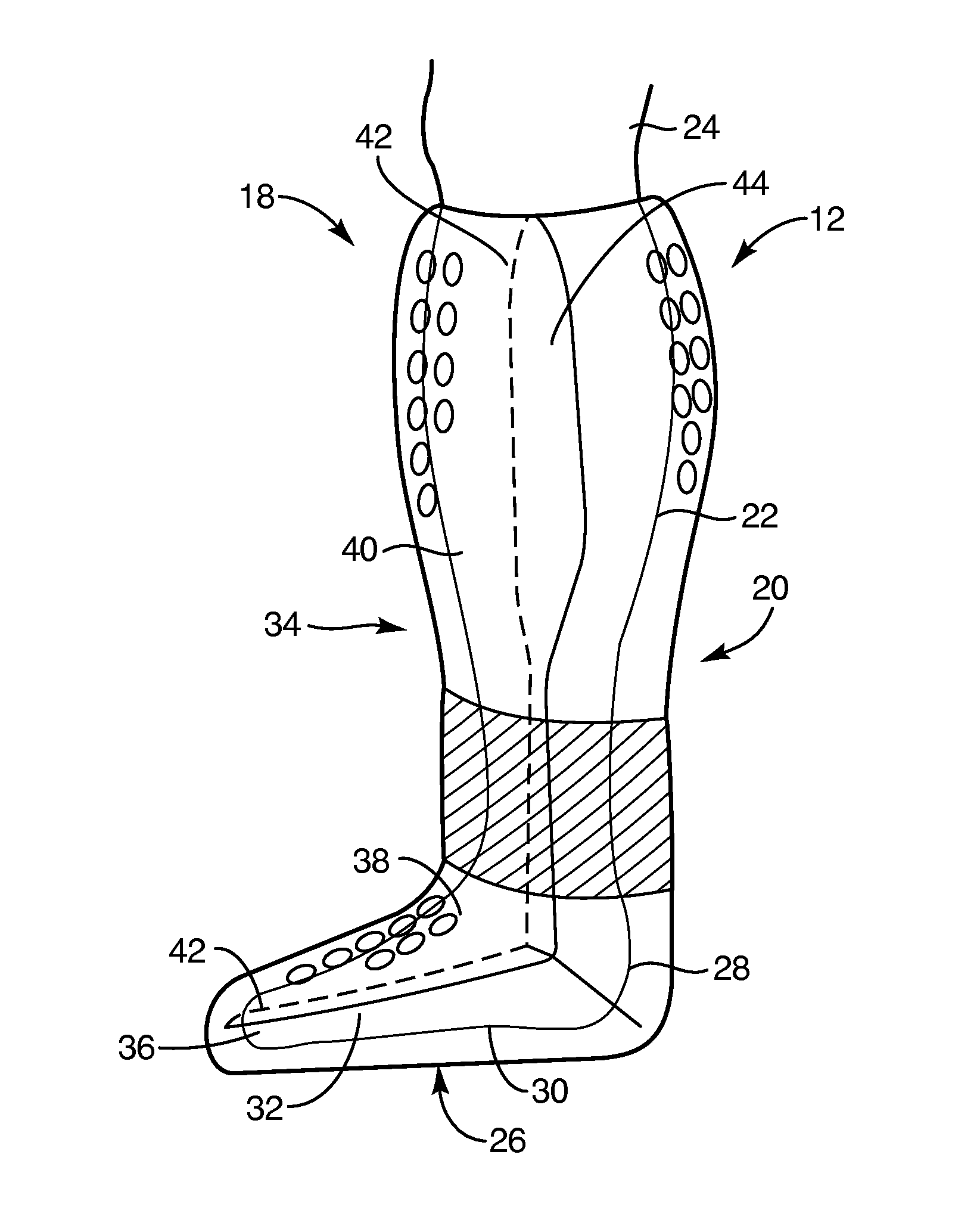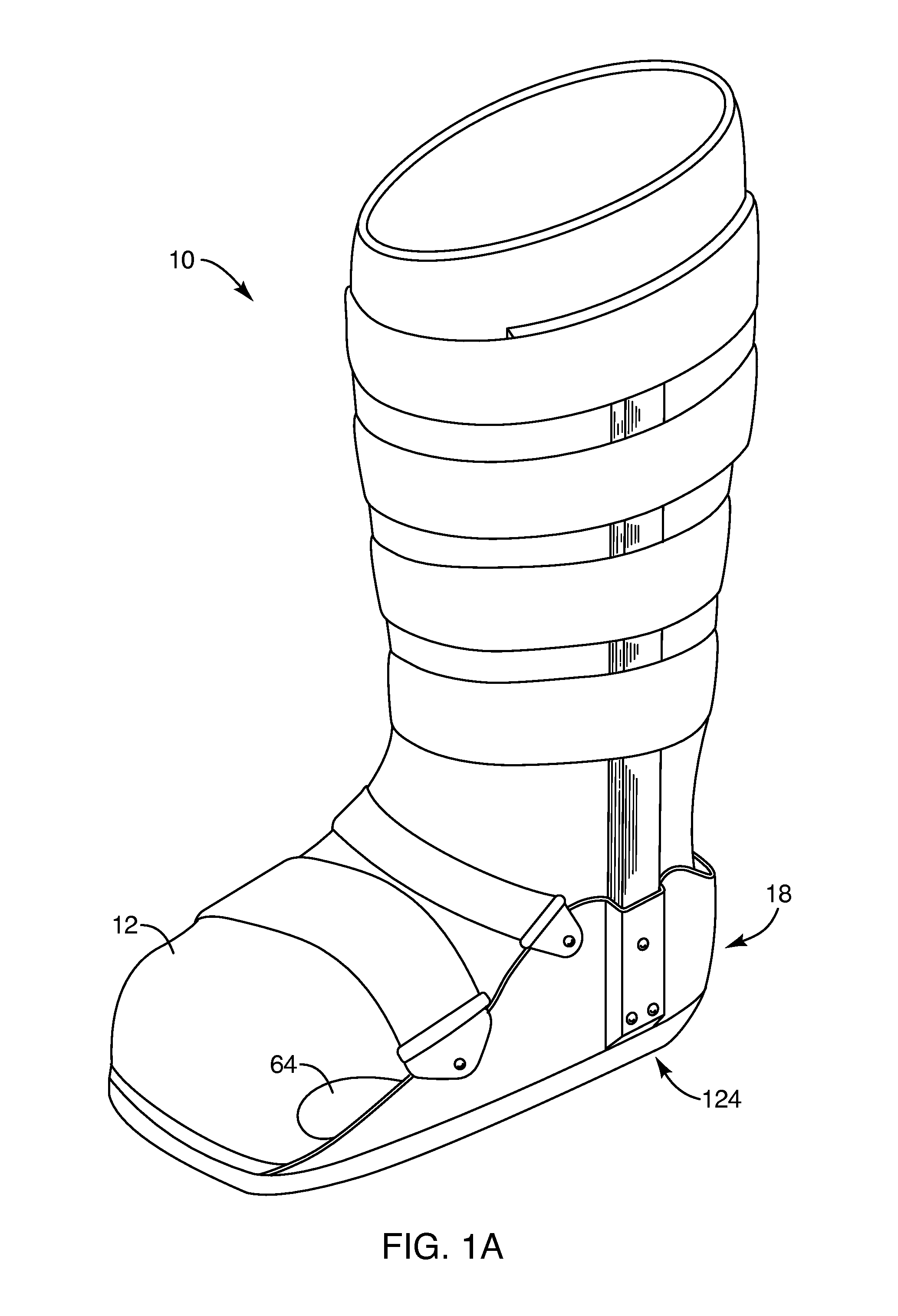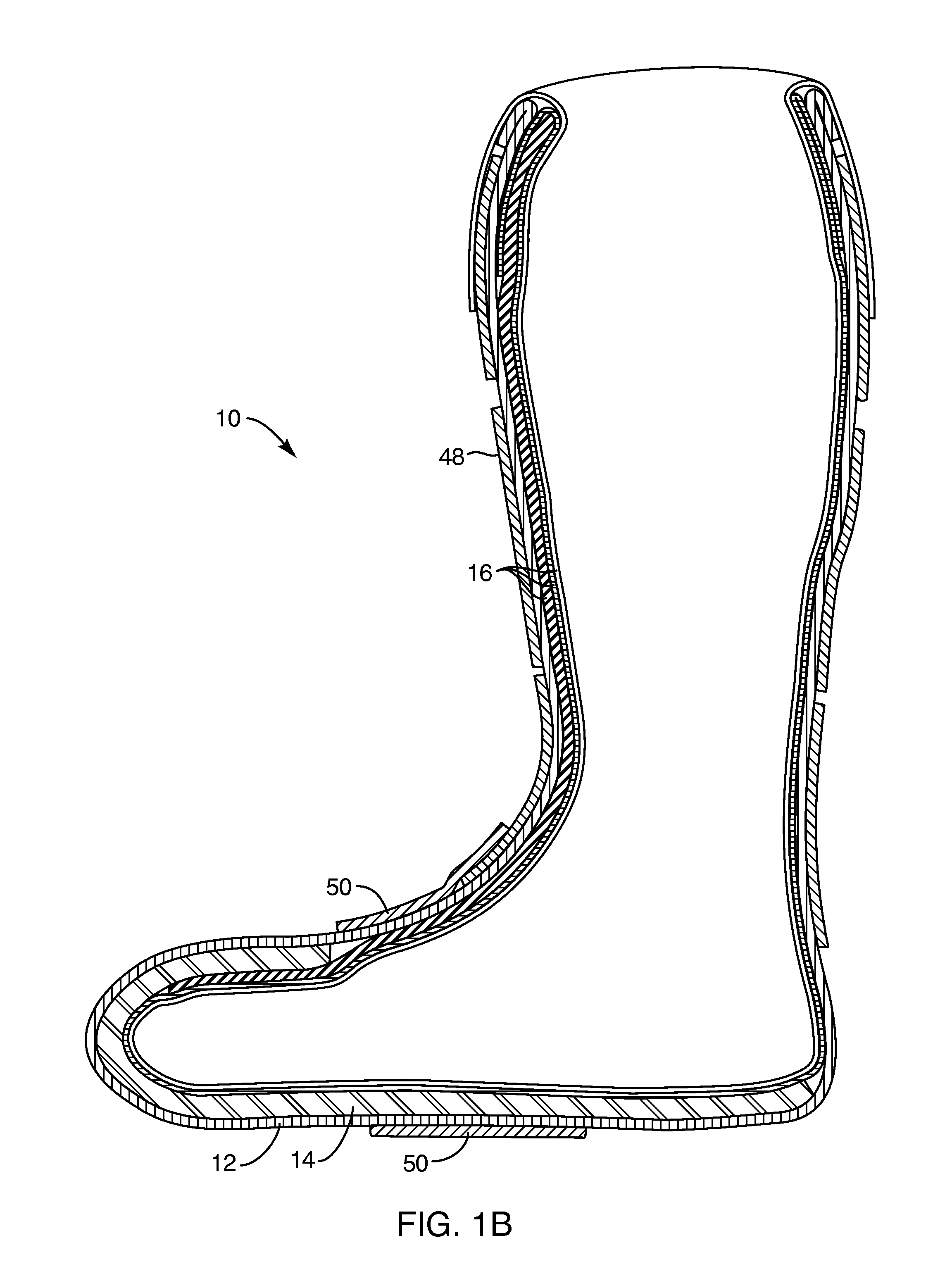Total contact and offloading cast system
a total contact and cast technology, applied in the field of orthopedic casts, can solve the problems of affecting the life of an individual, affecting the life of a person, and a relatively high risk of ulceration, wounds, ulcers, etc., and affecting the soles of
- Summary
- Abstract
- Description
- Claims
- Application Information
AI Technical Summary
Benefits of technology
Problems solved by technology
Method used
Image
Examples
Embodiment Construction
[0078]The present invention relates to orthopedic casts. In particular, some implementations of the present invention relate to one or more components of a total contact cast system that can be used in the treatment of an appendage, such as a leg or foot. Indeed, in some implementations, the described cast system is configured to support a patient's foot and leg, while offloading weight from a wound on the patient's foot. In this regard, the term wound may be used herein to refer to a sore, ulcer, cut, incision, laceration, puncture, pustule, skin graft, stitched portion of skin or flesh, bruise, boil, contusion, broken bone, and / or any other suitable injury that can be covered, offloaded, cushioned, protected, and / or otherwise be treated with one or more components of the described cast system.
[0079]In the disclosure and in the claims, the term lower leg (and variations thereof) may be used to refer to any portion of a patient's leg that is located distal to the patient's knee.
[008...
PUM
| Property | Measurement | Unit |
|---|---|---|
| distance | aaaaa | aaaaa |
| pressure | aaaaa | aaaaa |
| width | aaaaa | aaaaa |
Abstract
Description
Claims
Application Information
 Login to View More
Login to View More - R&D
- Intellectual Property
- Life Sciences
- Materials
- Tech Scout
- Unparalleled Data Quality
- Higher Quality Content
- 60% Fewer Hallucinations
Browse by: Latest US Patents, China's latest patents, Technical Efficacy Thesaurus, Application Domain, Technology Topic, Popular Technical Reports.
© 2025 PatSnap. All rights reserved.Legal|Privacy policy|Modern Slavery Act Transparency Statement|Sitemap|About US| Contact US: help@patsnap.com



